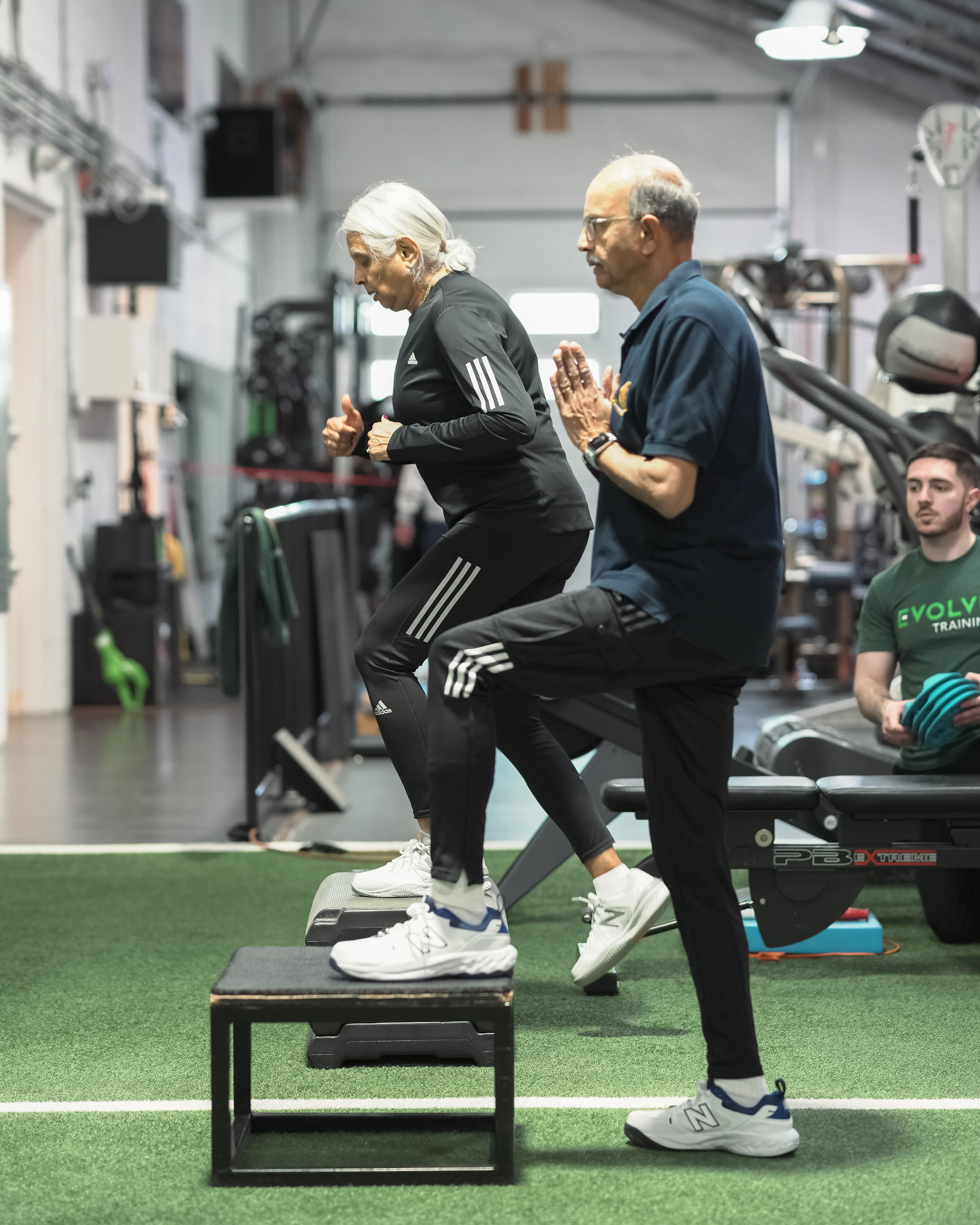
Walking Is Great — But It’s Not Enough for Optimal Health
Fitness - October 22, 2025
Walking: The Foundation of Movement
Let’s start here: walking is fantastic. It’s simple, free, low-impact, and one of the easiest ways to stay active. For adults in their 40s, 50s, and 60s, walking helps improve circulation, reduces stress, and supports joint health. It’s one of the best habits you can build for longevity!
But while walking checks many boxes, it only covers part of what your body truly needs to stay strong, mobile, and resilient as you age.
If your goal is to feel your best — not just “get your steps in” — it’s time to go a little deeper!
Why Walking Alone Isn’t Enough
The truth is that walking doesn’t significantly improve muscle strength, bone density, or mobility range — all of which decline naturally as we age.
By age 40, most adults start losing about 3–8% of muscle mass per decade, and after 60, that rate can double. Without enough muscle, everyday tasks (like climbing stairs or carrying groceries) get harder, balance worsens, and your metabolism slows.
Unfortunately, walking simply doesn’t challenge your muscles enough to prevent this decline.
Strength Training: The Key to Staying Capable
Adding two to three strength training sessions per week is one of the most effective ways to maintain — and even rebuild — muscle, bone, and joint health.
Benefits of consistent resistance training include:
- Better posture and balance, reducing the risk of falls.
- Increased bone density, lowering the chance of osteoporosis.
- Improved metabolism, helping you control body fat.
- Better blood sugar and heart health, supporting long-term wellness.
- Easier daily movement — everything from getting off the floor to playing with grandkids feels better.
You don’t need to strength train like a powerlifter to get results. Bodyweight movements, like squats, pushups, or TRX rows, and moderate dumbbell work done properly can make a big difference.
The key, though, is progression. Your body adapts quickly to what you do regularly, which means repeating the same exercises at the same weight and intensity won’t produce ongoing results. This concept is known as progressive overload — gradually increasing the challenge on your muscles over time. That could mean lifting slightly heavier weights, doing more reps, slowing down the tempo, or improving your technique. At Evolve Training, we design programs that progress safely and intentionally, so your strength keeps improving without overtraining or risking injury.
Mobility: The Missing Link
Many adults stretch, but few work on mobility — the ability to move joints freely and under control.
Think of mobility as the bridge between strength and flexibility. Without it, strength training feels stiff, and walking mechanics suffer. Tight hips, weak glutes, and poor shoulder range often lead to pain or overuse injuries.
Just 5–10 minutes a day of targeted mobility work can improve joint health and movement efficiency. At Evolve, we teach clients how to integrate mobility into warm-ups and recovery sessions so it becomes part of their daily routine.
A great place to start is with foam rolling or self-myofascial release. These techniques target tight or overactive muscles and fascia — the connective tissue surrounding your muscles — to improve blood flow, reduce stiffness, and restore normal movement patterns. Rolling the quads, glutes, calves, or upper back before strength training helps the body move more freely and prepares muscles to activate properly. Over time, consistent foam rolling can increase range of motion, decrease soreness, and make mobility work even more effective.
Cardio Beyond Walking
Walking supports heart health, but your cardiovascular system needs a bit more variety. Short bursts of higher-intensity exercise — such as rowing, cycling, sled pushes, or even interval-style circuit training — help improve heart efficiency and stamina far more than long, steady-state jogging.
These workouts also stimulate more muscle fibers, improve oxygen delivery, and keep your metabolism active longer after exercise. Think of them as the perfect complement to your walks!
The Ideal Fitness Mix for Optimal Health
For most adults, the sweet spot looks like this:
- Walk most days of the week — it’s your foundation for daily movement.
- Strength train 2–3 days per week to preserve muscle and joint health.
- Work on mobility several times per week to move well and stay pain-free.
- Add short, focused cardio intervals once or twice per week to strengthen your heart and lungs.
This combination builds a resilient, capable body that ages well and feels great every day.
Takeaway
Walking is a wonderful starting point — but it’s not the finish line. If you want to stay strong, mobile, and independent as you age, your body needs more than steps.
At Evolve Training, we specialize in helping adults over 40 build balanced, sustainable fitness routines that go beyond walking — combining strength, mobility, and smart cardio in a supportive, coached environment.
Ready to evolve your routine?
👉 Schedule your free consultation today at EvolveTrainingNJ.com